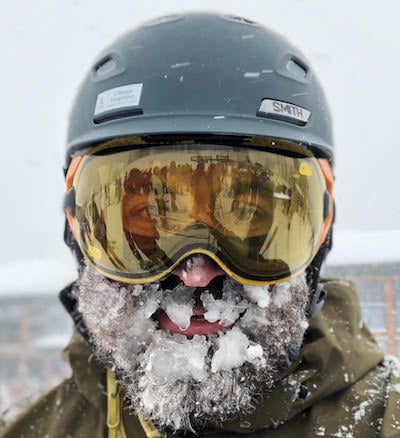News

By Luke Stone, Forecaster Posted 10 months ago August 30, 2024
Wild Week of Weather In the West
Two anomalously cold storms delivered impressive August snow totals across the western US and Canada over the last week. The first storm came from the west and favored Oregon, California, and Wyoming. Storm #2 came down from the northwest, bringing with it even colder air from northern latitudes that reached Alberta and northwestern Montana.
Let's take a look at some pictures of the snow that fell across the western US last weekend. The deepest snow looked to be at Mammoth and Mt. Shasta, and given their high elevation compared to the rest of the Sierra, that's not surprising.




Parts of Highway 89 through Lassen Volcanic National Park in California were shut down after several inches of accumulation.
The resorts in Tahoe are a bit lower, but many still managed to pick up a dusting.



Oregon got in on the action even before the Sierra did, as Mt. Bachelor even had to shovel at the summit to keep the mountain biking operation running.



This storm tracked just far enough north to bring some light snow to Sunshine Village as well.

After delivering snow to Oregon, California, and Washington, the storm tracked further inland and brought some light snow to Wyoming, both at the upper elevations of Jackson Hole and Togwotee Pass.



The next system had already developed near the Arctic and was making its way southeast from Alaska toward the Pacific Northwest. It would begin to impact western Alberta and interior British Columbia on Tuesday before moving into Montana on Wednesday. This storm packed more of a bit more of a punch, in part due to the colder air.
The snow piled up at Sunshine Village in Alberta, with at least six inches at upper elevations.




It was cold enough to snow all the way down to the base at Sunshine Village.

Nearby resort Lake Louise had at least a few inches as well.


Farther south in western Alberta, Castle Mountain had nearly four inches on the stake.


Another Alberta resort, Nakiska, received a dusting too.

Resorts in interior British Columbia saw some snow during this time, including Big White, Apex Mountain, Revelstoke, and Kicking Horse.





As the storm moved farther south and east, the heavy snow reached northwestern Montana. Glacier National Park was blanketed with snow and as much as a foot at upper elevations.

There was some light snow at Whitefish at upper elevations, and farther south at Showdown and Bridger Bowl as well.


Along with the snow, which is lovely to see in August, the cooler temperatures provided a much-needed reprieve from the scorching Summer. While August snow is not common across the higher elevations of the western US and Canada, it does happen from time to time. Palisades Tahoe hadn't seen snow in August since 2003, but Mammoth did back in 2017.
Let's take a quick look at how this widespread August snow developed. The first thing that stands out is the two upper-level storms that moved through the west over the last week. Below is the upper-level pattern for the first storm. You can see the area of low pressure coming off the Pacific Ocean into Oregon/northern California.

The second system, impacting the region during the middle part of this week, developed near the Arctic and moved down through the Gulf of Alaska into the Pacific Northwest.

Both of these storms brought very cold air for this time of year. The blue and purple colors represent temperatures that are below normal. You can see this airmass moving from the Pacific Ocean into the western US during the first storm.

With the second storm, the air mass originates near the Arctic and accompanies the low-pressure system down the Canadian coastline into the Northwest.

You can see a dip in the strong jet stream that directed these storms into the western US and Canada.


The jet stream usually looks something like this during the summer months, strong in the North Pacific off the Alaska coast.

One reason the jet stream was strong and positioned over the west is the strong high pressure in the North Pacific.

This abnormally strong and expansive area of high pressure dominates most of the North Pacific during this period.

Finally, this high pressure is likely related to the sea surface temperatures in this region, which have been well above normal over the last ten days.

In summary, abnormally warm sea surface temperatures in the North Pacific led to a strong high-pressure system in the region. The high caused the jet stream to strengthen and buckle to the north over the Pacific. In response, the jet stream dips to the south over the western US and Canada, which leads to low-pressure systems strengthening and moving into the west. The jet stream buckling north allows cold air to be sent south into the western US and Canada. The low-pressure systems combined with this cold air set the stage for the impressive late summer snow.
In addition to providing a beautiful wintry scene and relief from high temperatures, this series of storms helps stave off wildfires across the western US and Canada. Although August snow does not correlate to snow during the winter, the aforementioned benefits are greatly appreciated.
Thanks for reading this report on the recent snow in the West.
Luke Stone
Forecaster, OpenSnow
About The Author




